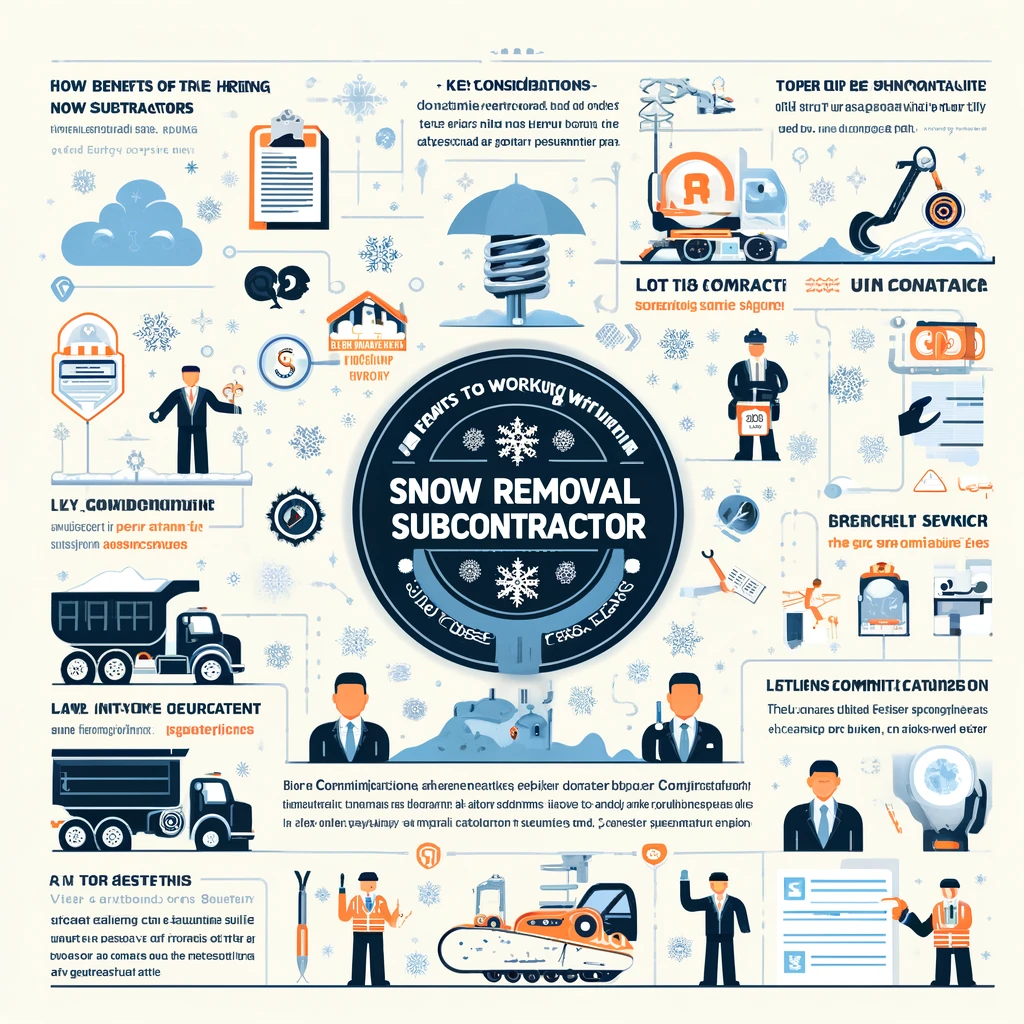The Essential Guide to Hiring Snow Removal Subcontractors

As the winter season approaches, snow removal becomes a critical service for many businesses and residential areas. Given the seasonal nature and regional demand for these services, many companies opt to hire snow removal subcontractors to manage the workload efficiently. This comprehensive guide aims to explore the intricacies of working with snow removal subcontractors, including the benefits, challenges, key considerations, and legal aspects of subcontracting snow removal services. By integrating authoritative resources, this article seeks to offer valuable insights and best practices for businesses looking to navigate the winter season effectively.
Understanding Snow Removal Subcontracting
Definition and Importance
Snow removal subcontractors are third-party entities or individuals hired by primary snow removal companies to provide snow and ice management services on their behalf. This arrangement allows primary contractors to expand their operational capacity and geographic service areas without the need for significant capital investment in additional equipment or full-time staff.
The significance of subcontracting in the snow removal industry cannot be overstated, especially in regions where snowfall is heavy and unpredictable. Subcontractors play a crucial role in ensuring public safety, accessibility, and compliance with local snow removal ordinances.
For an introduction to subcontracting and its implications in business operations, the U.S. Small Business Administration offers resources that can be found here.
Benefits of Hiring Snow Removal Subcontractors
Scalability: Allows companies to handle larger contracts or multiple jobs simultaneously.
Flexibility: Provides the ability to quickly respond to varying levels of snowfall across different regions.
Cost Efficiency: Reduces the need for investing in additional snow removal equipment and hiring seasonal employees.
Expertise: Subcontractors often bring specialized skills and local knowledge to the task.
Key Considerations for Hiring Snow Removal Subcontractors
Vetting Process
Conduct thorough due diligence to ensure that potential subcontractors have the necessary experience, equipment, and staffing to meet your service standards. This includes checking references, reviewing past work, and verifying certifications or licenses.
Legal and Insurance Requirements
It's essential to confirm that subcontractors have appropriate liability insurance and workers' compensation coverage. Contracts should clearly outline the scope of work, payment terms, liability issues, and insurance requirements to protect both parties.
For guidance on legal requirements for subcontractors, Cornell Law School’s Legal Information Institute provides an overview of relevant laws here.
Communication and Coordination
Establish clear lines of communication and coordination protocols to ensure that snow removal services are delivered efficiently and in accordance with client expectations. This includes setting up regular check-ins, leveraging technology for real-time updates, and having contingency plans for extreme weather conditions.
Quality Control and Performance Monitoring
Implement systems for monitoring the quality of work performed by subcontractors and addressing any issues promptly. Regular site inspections, client feedback, and performance metrics can help maintain high service standards.
Legal and Contractual Framework
Contracts
A well-structured contract is paramount when engaging snow removal subcontractors. The contract should detail the services to be provided, payment schedules, insurance requirements, and procedures for dispute resolution. It should also address subcontractor responsibilities regarding adherence to local snow removal laws and regulations.
For contract drafting tips, the American Bar Association provides guidelines and resources, accessible here.
Compliance with Local Ordinances
Both primary contractors and subcontractors must be aware of and comply with local snow removal ordinances, which can vary significantly from one municipality to another. Non-compliance can result in fines and legal liabilities.
Resources for understanding local ordinances can often be found on city or county government websites, such as this example.

Create & Review Your Contracts 10x Quality and Ease
Lawyer-level AI handles all your contract needs, with real lawyers providing safeguarding support

Conclusion
Hiring snow removal subcontractors can offer significant advantages to businesses in terms of scalability, flexibility, and cost efficiency. However, success in this endeavor requires careful vetting, clear contractual agreements, and effective management practices. By adhering to best practices and legal guidelines, companies can build productive partnerships with subcontractors, ensuring reliable and efficient snow removal services throughout the winter season.
For further reading on managing subcontractor relationships and navigating legal considerations, authoritative sources such as the National Snow and Ice Data Center and educational platforms like MIT’s OpenCourseWare provide valuable information and insights.

